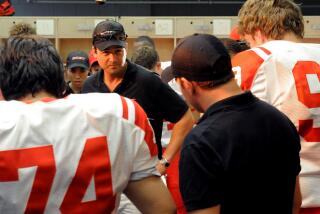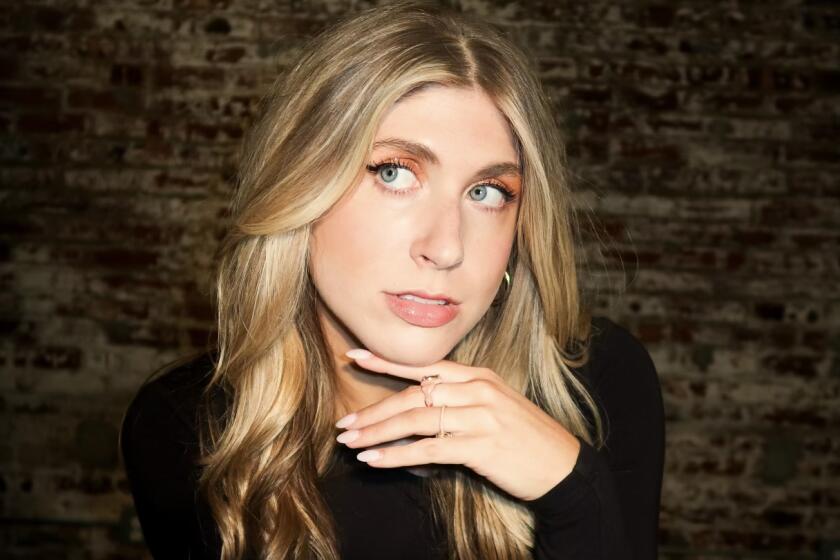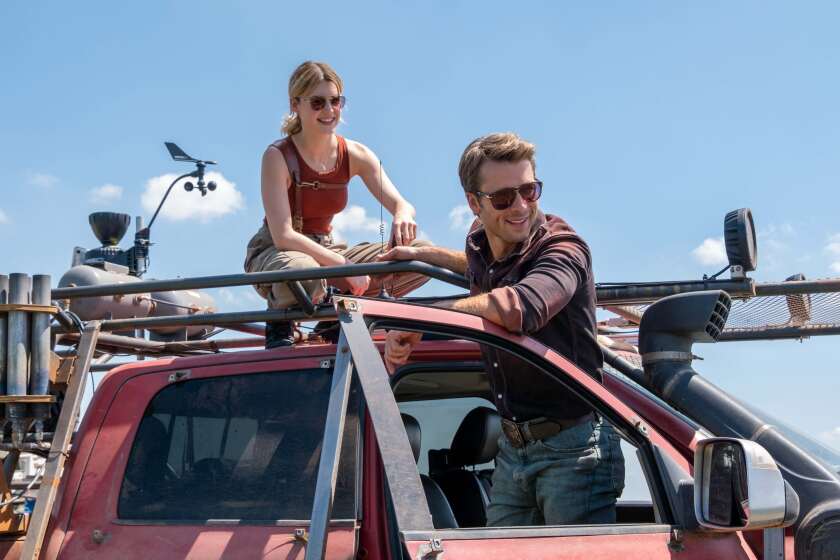They’ve morphed yet again
East is East and West is West, wrote Rudyard Kipling, and never the twain shall meet. But he hadn’t imagined producer Haim Saban, who in 1993 transformed a Japanese adventure serial called “Kyoryuu Sentai Zyuranger” (“Dinosaur Task Force Beast Rangers”) into “The Mighty Morphin Power Rangers,” a cross-cultural hybrid that -- reinforced by the plastic legions unleashed by giant toymaker Bandai -- created a true Asian-inflected American phenomenon. So much of one, indeed, that early Saturday morning the franchise embarks upon its 13th season, as “Power Rangers SPD: Space Patrol Delta.” (It debuts first on ABC Family but will also run on Toon Disney, starting Monday, and on plain vanilla ABC, starting Feb. 26 -- all part of the Disney family, which bought the rights to the Power Rangers in 2003.)
Thirteen seasons, ladies and gentlemen. You will be forgiven for not having known: The show’s early moment as a cultural touchstone for those outside its preadolescent target audience has passed, a moment certified by an early episode of “Friends” -- the fact that I remember this is embarrassing from a number of angles. (Ross: “It’s morphin’ time!” Joey: “Stegosaurus!” Chandler: “Tyrannosaurus!”) And more than one generation of actual children has lived long enough to outgrow it. Yet the show persists, and I am glad to say so. Its lapses in tone or sense or continuity are nothing that would disturb a 10-year-old viewer, or an adult who is fully aware that he has “better” things to do than watch a show meant for 10-year-olds.
Using material from the Japanese series “Tokusou Sentai Dekaranger” (“Special Investigation Task Force Detective Ranger”), the current edition is set “in the not too distant future,” when various strains of extraterrestrials have immigrated to Earth -- see also “Men in Black” -- some of whom get along and some of whom don’t, which is where the Rangers step in. They report to a large, scaly, blue talking dog and a woman with cat ears, and as always, they represent a range of attitudes and ethnicities -- a casting choice that goes back to the first series, though it was an unfortunate lapse of imagination then to make the Black Ranger African American and the Yellow Ranger Vietnamese American. “SPD” assigns its colors less predictably, though the Pink Ranger will never be male.
“Emperor Gruumm,” another in a long line of red-eyed, skull-headed ultimate villains from space, is the big enemy, and he’s got an army of robots and monsters to keep the new Rangers as busy as any of their forebears -- though these Power Rangers are, in fact, only B-Team Rangers, not yet certified to pilot the Megazords necessary to fight the giant monsters that will appear like clockwork throughout the year. You can call it predictable, or you can call it tradition.
The show’s roots run deep, into the decades-old Japanese genre called sentai (roughly translated as “task force” or “battle squad”), which features such elements as the (usually) five-person fighting team clad in bright, shiny color-coded uniforms and arrayed against the giant monsters. Saban kept the monsters and robots and traded the Japanese actors for American, saving only the scenes in which the Rangers were costumed and completely masked. The stateside adaptation is perhaps more “scientific” and less “magical,” more rooted, for all the morphing and martial arts, in the familiar universe of the teenage soap opera than in the convoluted mysticism of the Japanese originals. Yet the Asian influence shows through, and it’s the fact that the show belongs to two worlds at once that gives it its singular, slightly mysterious aura and makes it so weirdly appealing.
The fact is, nothing says “21st century,” or “late 20th century vision of the 21st century,” so much as the commingling of Occident and Orient. Thus your “Matrix,” your “Blade Runner.” Asian martial arts are the way cool foes battle now, from the “Charlie’s Angels” remakes to “Kill Bill.” The fistfight is passe -- which only makes sense for kids weaned on the light-saber samurai theatrics of “Star Wars” and who grew up playing soccer and basketball rather than football (former paradigm of sport heroics) or learning taekwondo or kung fu. The fight scenes in “Power Rangers” are less about collision than acrobatic avoidance, and they are stylized near to the point of dance, especially when the Japanese footage -- speedier, more percussive, more posed -- is used. That’s when the show is most satisfying and strange.
In local action-hero terms, the Power Rangers’ true cousins are Errol Flynn and Douglas Fairbanks, fleet-footed, almost feminine, the yin to the yang of the later muscular enforcers epitomized by Sylvester Stallone and Arnold Schwarzenegger -- the human equivalent of Humvees, reckoned by the punishment they can take. (And a dying breed they are.) The Power Rangers’ totemic vehicle is, by contrast, the motorcycle, fast and maneuverable, and their costumes are pure motocross. And where the American hero is a loner whose distrust of authority is ingrained if not inborn, the Rangers ultimately display -- after some lessons are learned -- the oddly foreign ideals of teamwork and consensus and respect for the wisdom of their elders.
I did say it was strange.
*
‘Power Rangers SPD: Space Patrol Delta’
*
Where: ABC Family and Toon Disney
When: Premieres 8:30 a.m. Saturday on ABC Family, 7:30 p.m. Monday on Toon Disney
Rating: TV-Y7 FV (suitable for children 7 and older, with an advisory for fantasy violence)
Chris Violette...Schuyler “Sky” Tate/
Blue Ranger
Monica May...Elizabeth “Z” Delgado/
Yellow Ranger
Brandon Jay McLaren...Jack Landors/
Red Ranger
Alycia Purrott...Sydney “Syd” Drew/
Pink Ranger
Matt Austin...Bridge Carson/
Green Ranger
Executive producers Bruce Kalish and Greg Aronowitz.
More to Read
The biggest entertainment stories
Get our big stories about Hollywood, film, television, music, arts, culture and more right in your inbox as soon as they publish.
You may occasionally receive promotional content from the Los Angeles Times.







